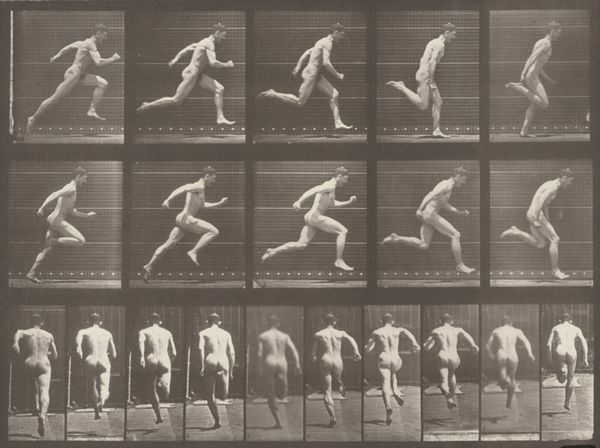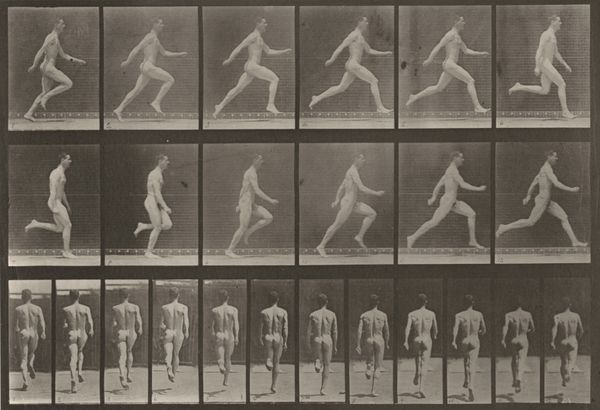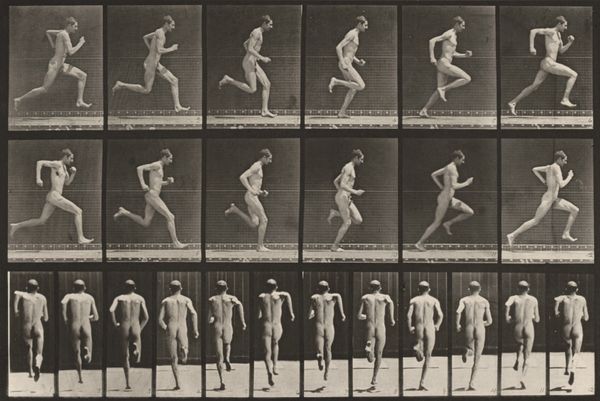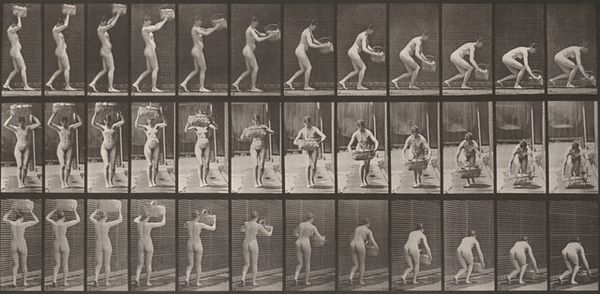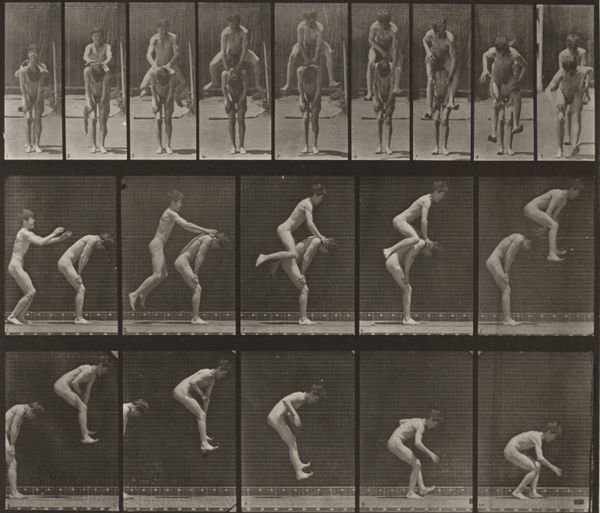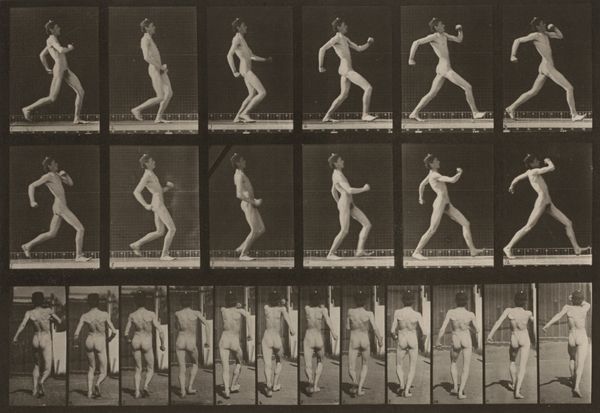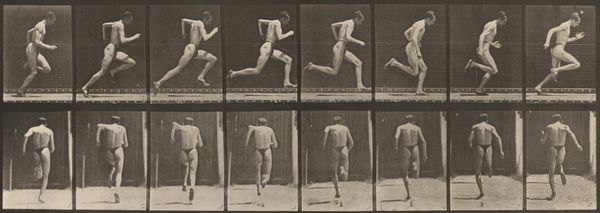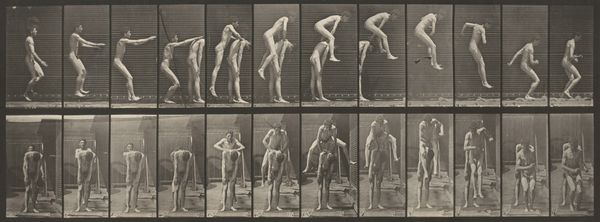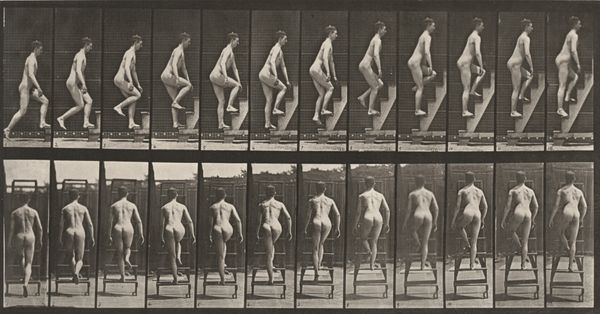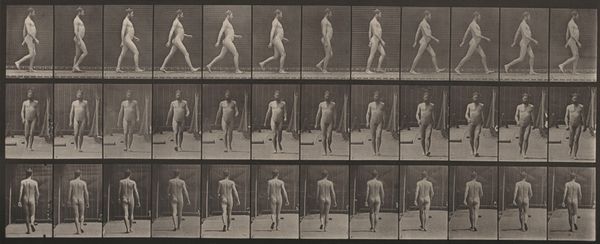![[Boys Playing Leap Frog] by Eadweard Muybridge](/_next/image?url=https%3A%2F%2Fd2w8kbdekdi1gv.cloudfront.net%2FeyJidWNrZXQiOiAiYXJ0ZXJhLWltYWdlcy1idWNrZXQiLCAia2V5IjogImFydHdvcmtzLzYyZGQwYTYxLTFkZjMtNDZiZi04Y2MwLTlhN2Y2ODRhZjgwZS82MmRkMGE2MS0xZGYzLTQ2YmYtOGNjMC05YTdmNjg0YWY4MGVfZnVsbC5qcGciLCAiZWRpdHMiOiB7InJlc2l6ZSI6IHsid2lkdGgiOiAxOTIwLCAiaGVpZ2h0IjogMTkyMCwgImZpdCI6ICJpbnNpZGUifX19&w=3840&q=75)
photography, gelatin-silver-print
#
portrait
#
photography
#
gelatin-silver-print
#
nude
#
realism
Copyright: Public Domain
Editor: This is a really interesting piece by Eadweard Muybridge, "[Boys Playing Leap Frog]," a gelatin silver print made sometime between 1883 and 1886. I’m struck by how much it feels like a scientific study, yet the subject matter – children playing – is so carefree. What do you see in this work? Curator: It’s easy to read this piece through the lens of scientific advancement, but let's consider it as a cultural document. Think about the Victorian era, the societal gaze on the body, on childhood, on ideas of innocence and progress. How do Muybridge's sequential photographs, which aimed to dissect movement, inadvertently expose the underlying assumptions of his time? Editor: That’s a perspective I hadn't fully considered. So, instead of just seeing the technology at work, we should think about what that technology was being used to observe, and why? Curator: Exactly. Whose bodies were deemed worthy of such meticulous study, and what does that tell us about power structures? Moreover, think about the then-nascent field of eugenics. Muybridge’s work wasn't created in a vacuum. The Victorian fascination with categorizing and measuring translated into harmful ideologies, influencing discriminatory practices related to race, class, and gender. Does this image reinforce or subvert these contemporary social norms? Editor: I see. It complicates the reading. It makes me think about who has the privilege to simply ‘play’ and be observed versus those whose bodies were, and are still, heavily policed and surveilled. Thanks! It’s fascinating to consider how these early experiments with photography are still very relevant. Curator: Indeed. Understanding the past is essential for interrogating the present.
Comments
No comments
Be the first to comment and join the conversation on the ultimate creative platform.

